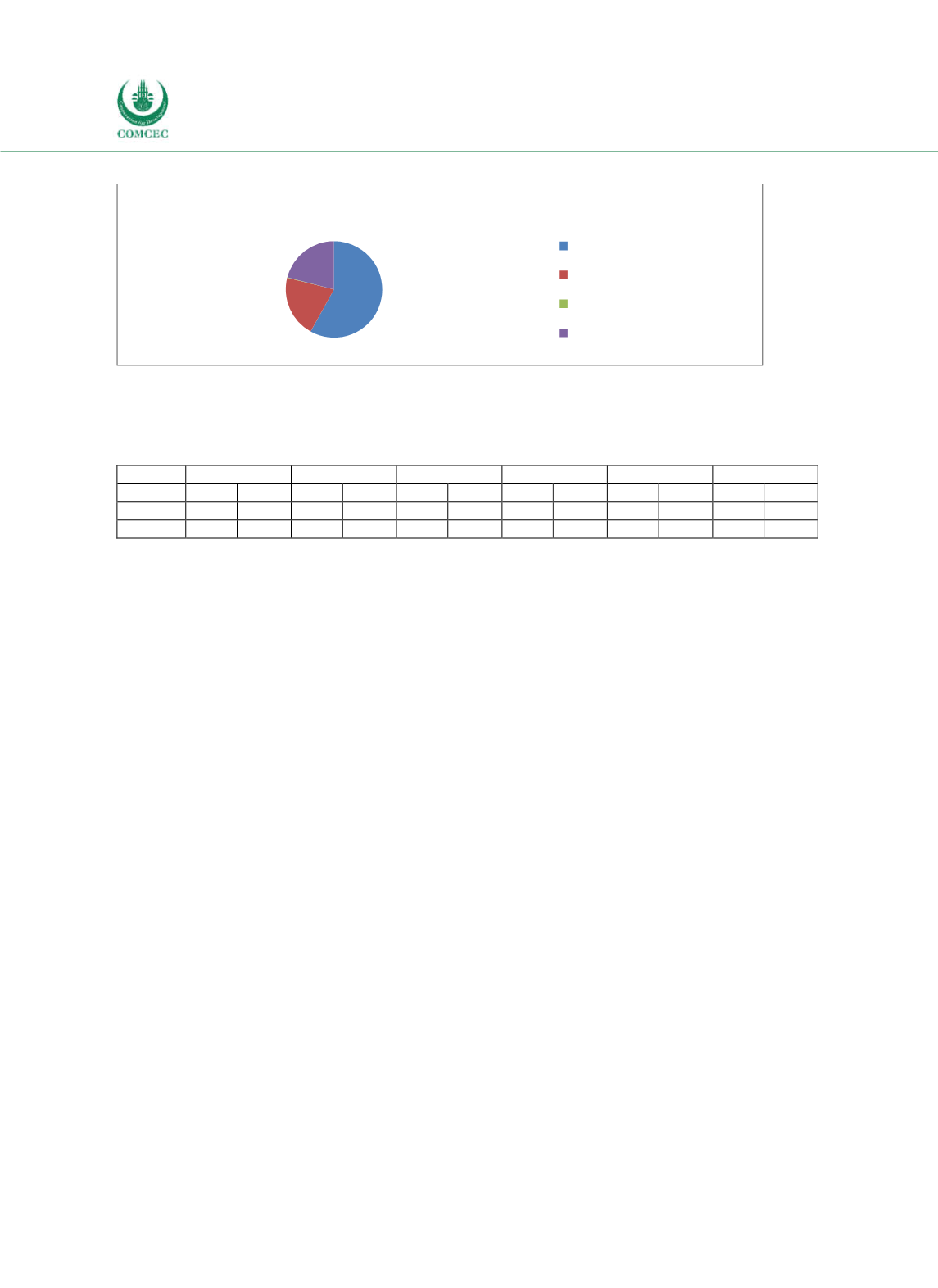

Improving Public Debt Management
In the OIC Member Countries
110
Figure 4-17: Indonesia - Structure of Central Government Debt by Instrument
Source: MoF (2017b)
The change in structure is detailed in Table 48 below.
Table 4-8: Indonesia - Outstanding Central Government Debt 2011-2016 (in billion USD)
2011
2012
2013
2014
2015
2016
a
Loans
68.5 34% 63.0 31% 58.7 30% 54.5 26% 54.6 24% 54.2 21%
Securities
131.0 66% 138.9 69% 136.5 70% 155.2 74% 174.2 76% 202.2 79%
Total
199.5 100% 201.9 100% 195.2 100% 209.7 100% 228.8 100% 256.4 100%
Source: Directorate General of Budget Financing and Risk Management (2016b, p. 20)
a
: provisional figures, refer
to 31 December 2016.
Table 48
shows that while loans have only slightly increased in nominal terms, the
accumulating debt has been financed largely by an increase in securities. The structure of the
loans explains why: out of the 733 trillion IDR ($54.2 billion) loans outstanding at the end of
2016, 728 trillion IDR ($53.8 billion) were external; of that amount 313 trillion IDR ($23.1
billion) were bilateral loans with Japan accounting for almost two thirds thereof. 370 trillion
IDR ($27.4 billion) were multilateral loans, of which the World Bank held 63%, the Asian
Development Bank 34%, and the Islamic Development Bank 1.3%. Only 45.6 trillion IDR ($3.4
billion) were held by commercial banks, and 5 trillion IDR ($0.4 billion) by suppliers
(Directorate General of Budget Financing and Risk Management 2016b, p. 24 and personal
communication). In other words, the bulk of loans consist of bilateral or multilateral
intergovernmental loans, partly under concessionary terms, which cannot accommodate the
growing needs to finance rising budget deficits.
65% of all securities are IDR denominated and tradable, 9% are nontradable, and 26% are
foreign currency denominated and tradable. In the latter category, 88% are dollar
denominated, the rest is split between Yen and Euro. The increasing use of securities has made
Indonesia less reliant on a few international institutions and governments as multilateral and
bilateral creditors and thus has reduced political risk; at the same time it has made debt
financing more responsive to market forces and international sovereign credit ratings.
Sharia government securities have been issued since 2008 on the basis of Law No. 19/2008.
Following the Ministry of Finance Regulation 206/PMK.01/2014, the Directorate of Shariah
Financing has been established within the DGBFRM. Sharia bonds are issued in the domestic
market including the retail market, but also as
Global Sukuk
denominated in foreign currency.
Since May 2015 the
Global Sukuk
has been listed at the Dubai NASDAQ exchange (Directorate
General of Budget Financing and Risk Management 2015). The Islamic Government Bonds
(
Surat Berharga Syariah Negara, SBSN
), including a number of subgroups such as the
Indonesian Haj Funds Sukuk (
Sukuk Dana Haji Indonesia, SDHI
) or Islamic Treasury Bills (
Surat
Perbendaharaan Negara-Syariah
), account for % of all government securities or almost 12% of
149.9
53.57 0.38 54.19
in billion US $ equiv. , as of 31.12.2016
Gov. Securities, domestic
Gov. Securities, external
Loans, domestic
Loans, external
















